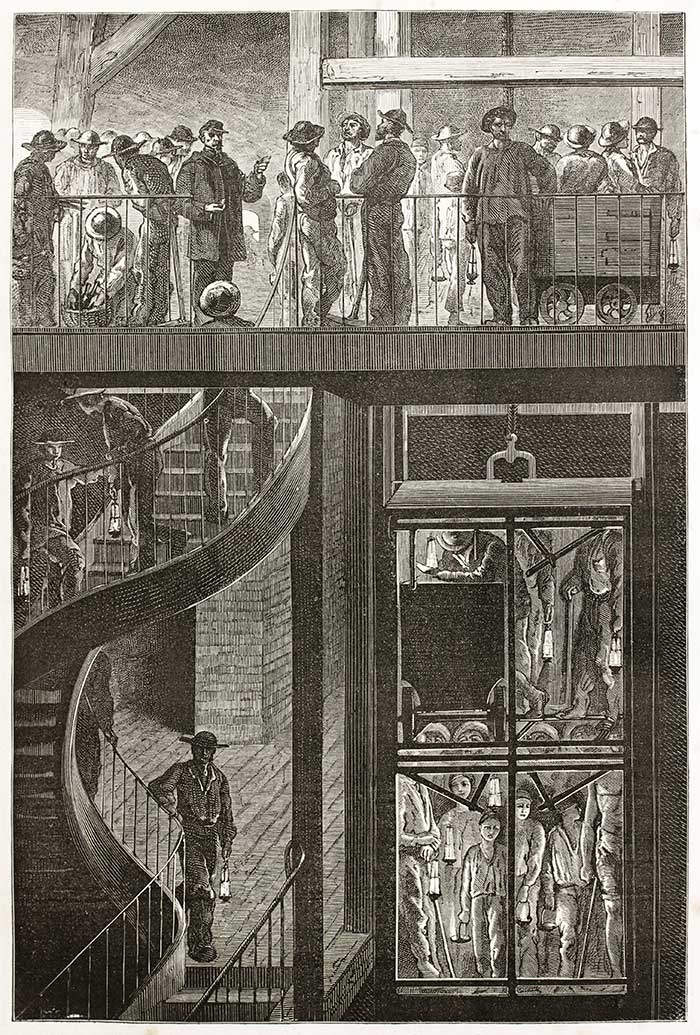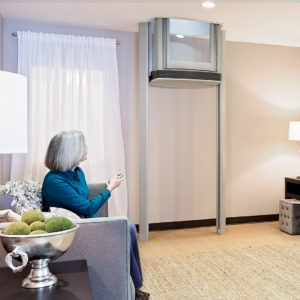
How much do home elevators cost?
In 2025, the cost to install a home elevator starts from $15,000 up to $50,000 and has not increased substantially although the home elevator price depends, of course, on the model and type of installation work that is needed.
- Hydraulic Cable Elevators start at $15,000 up to $35,000
- Chain Elevators start at $20,000 up to $50,000
- Hydraulic Elevators start at $20,000 up to $50,000
- Pneumatic Elevators start at $35,000 up to $50,000
The cost of a Stiltz Home Elevator is considered a very competitive home elevator cost compared to the residential elevator cost of other manufacturers in the USA. The brand can keep Stiltz elevator costs down because, unlike other lifts featured on home elevator price lists, the product does not need a separate machine room to operate it or require an elevator pit. A Stiltz elevator price will depend on the model, size and installation so in order to get an exact Stiltz lifts price then customers would need a full site survey. However, Stiltz lift costs are still likely to be much less than other home elevator alternatives.
How much does a Stiltz Elevator cost?
The cost of a Stiltz home elevator can vary considerably depending on the model of lift you select, the options needed, and how much site preparation/construction is required to be completed by your Stiltz partner ahead of your home elevator being installed.
There is no substitute for having one of our local partners visit your home and provide an accurate written quote which will give you a full cost for the project. If you would like an idea of a typical price for a home elevator in your area, excluding the preparatory work and permits (if required in your area), please call our experienced telephone advisors at 1-844-917-0452 and they will be happy to help with this information. Please note, we can only give a price indication with a phone call once we know a little about your particular home and potential product choice. The price will be a guide only and will vary depending on your specific application and location.
We pride ourselves on giving honest, objective information and recommendations, and never use pushy sales techniques. We believe that if we can provide a solution that works for your needs and budget, your decision will be much easier. Our advice typically is to take advantage of the free / no commitment in-home quote service our local partners offer. Even if you don’t end up buying a Stiltz product, we will leave you in a more informed position about what’s right for you and your home.


What is a home elevator?
A home elevator is primarily for residential use in private homes or apartments and has been designed to make it easier for homeowners to travel between the floors of their home. Most commonly, this type of residential lift is for older people who are finding the stairs challenging or individuals who have other mobility issues or disabilities and it offers them an alternative to a traditional stair lift.
As residential elevator products have progressed in design and functionality, they are also popular with homeowners who are simply looking to improve their lifestyle or ‘future-proof’ their property for use in later life. Unlike elevators which are used in commercial buildings, offices and department stores, home lifts differ greatly in their size and style in order that the lifts are more suited to be installed in a private residential property.
Stiltz Home Elevator Case Studies
The Stiltz Home Elevator has been installed in thousands of American homes and has a ‘life-changing’ impact on people’s lives.
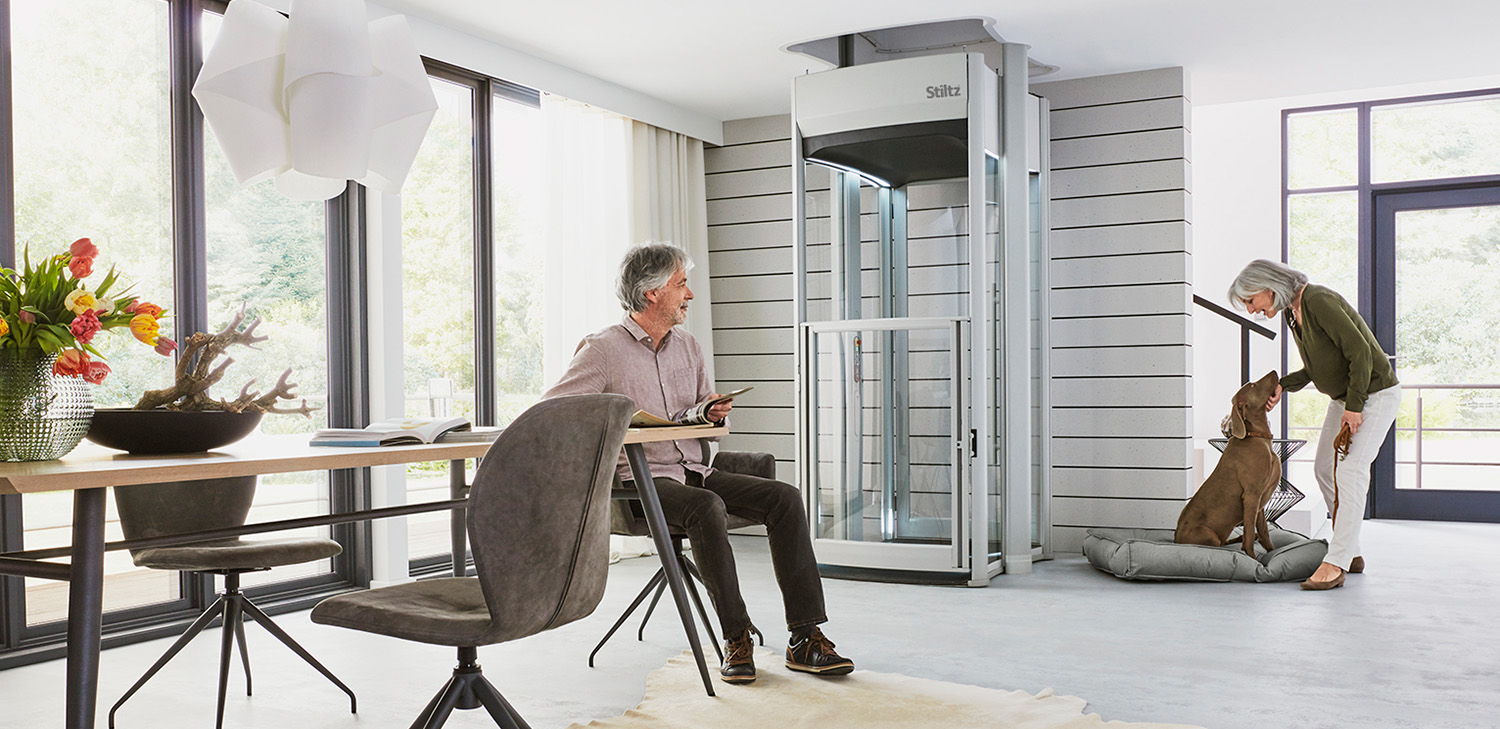
What different types of home elevators are there?
There are a wide range of home elevators available on the market today and the differences are based mainly on the style of the residential elevator and how they are powered.
Hydraulic Cable Elevator
Cable elevators vary depending on whether they require a lift shaft, pit or machine room. They are often powered by a motor which turns a drum with a cable wound around which pulls the lift upwards. The motor and drum are typically situated in a pit below the elevator or in a machine room with the cables routed downwards. The cables will be stretched over time and tend to get replaced every five years which, is an extra financial outlay to consider when buying a Hydraulic Cable Elevator. These types of elevators are more cost-effective when they are built into new homes. These types of elevator lifts are also described sometimes as ‘Traction Elevators’.
Non-Hydraulic Cable Elevator
Cable elevators without shafts, are much more flexible as these can be installed simply and quickly – and in almost any location in a private property. These smart and sophisticated-looking elevators were introduced in Europe in 2010 by Stiltz Home Elevators – and launched in the USA three years later. The elevators are usually substantially cheaper than any other type of residential elevator and loved by its customers. In 2019, a video by an American YouTuber about ‘how to install a home elevator in your living room’ went viral.
These intelligent residential elevators do not require supporting walls or hydraulics and are powered by a self-contained roped drum braked gear motor drive system which never needs to be replaced and is situated, out of sight, on top of the lift. It simply plugs straight into a standard dedicated 220v home outlet, just like any other major appliance. The lifts have been designed for all eventualities, including power outages. The home lifts are freestanding and travel on unique self-supporting dual rails which glide ‘through the floor’ with no extra weight burden on the home. The home elevators are extremely safe, use a clever use of space, considered much safer than a stair lift and can even act as the perfect dumbwaiter. The two-person Stiltz Duo Alta Home Elevator and Stiltz Trio Alta Home Elevator which is ideal for wheelchair users are the brand’s two newest releases.
Chain Elevators
Chain elevators are operated by a chain – instead of a cable – and use counterweights to balance the elevator. The chain will usually go over a toothed flywheel at the top of the elevator and back down to the counterweight. The elevator is powered by a geared-motor which turns the flywheel with the motor placed at the top of the shaft. This is a more cost-effective than a hydraulic cable elevator with shafts as chains tend to last for 20 years instead of five for cables.
Hydraulic Elevators
Hydraulic elevators work by pumping hydraulic fluid into the cylinder of the hydraulic arm through a valve. A piston is forced up by the pressure of the fluid and the elevator is pushed up with it. Typically, hydraulic elevators need a lot of space and a separate machine room which means homeowners have to sacrifice a wider area in their home and find a suitable location. These types of lifts often also need more regular servicing and maintenance which means they can prove costly compared to other solutions on the market.
Pneumatic Elevators
Pneumatic elevators use a vacuum system inside a tube to power the lift with no machine room or pit required. The elevator is self-supporting and air pressure, pumps and turbines pull the lift upwards and downwards which can often be noisy. These types of elevators are also known as ‘Vacuum Elevators’.
What are the benefits of installing a home elevator compared to a stair lift?
A home elevator offers significant advantages over a stair lift because they are often modern in design compared to old-fashioned stair lifts and, whilst practical, they are also an attractive alternative too. Non-hydraulic residential elevators, especially, tend to be quieter than many stair lifts and, in general, elevators typically move between floors much quicker. A distinct benefit of an elevator installed in the home is that the person can use it independently without having to be helped on and off by a family member or carer which is one of the downsides of a stair lift.
The other issue with a stair lift is that it can block up the stairwell, look rather undignified and has a stigma associated with ‘old people’ to it. It can also signal disability and a sense of vulnerability which can affect somebody’s overall confidence. With an elevator lift it can make any home fully accessible and a person can move between floors freely whenever they want at any time of day, all at the touch of a button. Home lifts also provide other additional benefits such as being useful for not just carrying people but things too such as luggage, heavy boxes, awkward items, the shopping even the laundry. It all helps rather than having to traipse it all up and down the stairs.
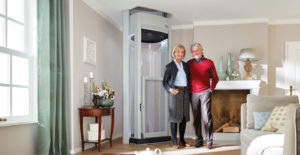
Unlike a stair lift which can only carry one person, elevators are usually designed to carry two people and some are designed for wheelchair users or could carry up to three people. Likewise, this type of product would be ideal for people with walking frames. Domestic elevators are also considered to be much more reliable than stair lifts, although typically a cheaper alternative, a stair lift can break down and need a high level of servicing and maintenance which increases the overall expense of the product. By installing a residential elevator, the homeowner can stay in their home for longer without the need to ‘downsize’ to a bungalow which can be costly, disruptive and emotionally draining. A home lift can not only be a stylish addition to any home but it can also add value to a property and is worth the investment.
Where can a home elevator be installed?
Most lifts are designed to move between just one floor in the home. The type of elevator lift chosen very much depends on where it can be located in the home. Most residential elevators will be capable of travelling from a hallway or family room downstairs up to a bedroom or on the landing although it depends on whether the homeowner has opted for an elevator that requires a pit or machine room or both. For example, non-hydraulic cable elevators can be installed almost anywhere in the home because it is does not require supporting walls or hydraulics and this freestanding elevator, travels on self-supporting dual rails and is powered by a self-contained motor. These home lifts can be tucked in a corner, in the turn of a staircase, or even in a closet. Or it can take center stage in any room. Some customers opt to have it installed in a garage for quick and safe access into their property. There is also the option of a ‘Thru Car’ elevator which means the user can enter on one side of the lift on the ground level and level from the other side on the first floor. The options are nearly limitless.
How long does it take to install a home elevator?
It can take anywhere between one week and 10 days to install either a hydraulic cable elevator, chain h elevator or hydraulic elevator due to the level of work which can be involved in building a lift shaft, pit or machine room if required. The time it takes to install a pneumatic elevator can take 2-3 days, while for a non-hydraulic cable elevator, a typical installation can take just one day.
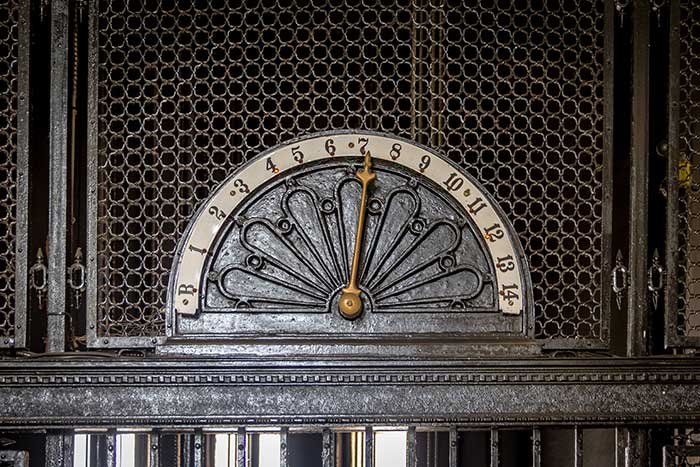
A History of the Elevator
The first passenger elevator is said to have been created in the 18th century and was used by King Louis XV of France in 1743 who is in understood to have one constructed at Versailles. However, this so called ‘elevator’ was very basic and was powered by men, stationed in a chimney, pulling on ropes and they called it the ‘Flying Chair’. Then 80 years later, British architect Thomas Horner built the first steam powered elevator which he named the ‘Ascending Room’. He launched it at the London Colosseum, designed by another British architect Decimus Burton, in 1829 with it capable of carrying up to 12 people with transparent surround offering a panoramic view of the city. The project proved very expensive and Horner fled to New York in the USA soon afterwards with it deemed a failure.
Horner’s invention was advanced by other architects who added a belt and counterweight for safety, which is said to have formed the basic principle of how lifts would work for more than 50 years. In 1852, American Elisha Otis was the man credited with pioneering the first elevator which would prevent it from falling if the hoisting cable snapped or failed. He invented a ‘brake’ or, ‘safety hoist’ as he called it, which meant if the cables broke, a wooden frame at the top of the elevator car would break and hit the walls of the shaft which would bring the elevator to a grinding halt.
Two years later, he founded his own elevator company and installed the first passenger elevator at The Equitable Life Building in Manhattan. In 1880, German inventor Werner von Siemens invented the first electric elevator, however, this was patented by Alexander Miles seven years later. Nowadays, more than 100 years later, elevators are not just used in commercial buildings but started to appear in residential homes too. Initially, these luxury lifts were only available to the super-rich looking for a simpler way of travelling between the floors of their home, but now home elevators are commonplace in many domestic properties throughout the whole of the United States and they are more affordable and available in a range of attractive designs.
They improve the lives of its homeowners every day by providing them with a simple way of moving around their home safely and independently. For more information please contact 844 263 7943 or email [email protected]
